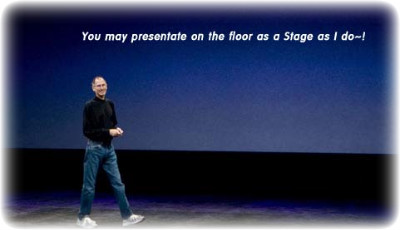Ten simple rules for making good oral presentations - written by Philip E. Bourne
2009. 1. 12. 17:10ㆍCommunication
Rule 1 : Talk to the Audience
We don't mean face the audience, although gaining eye contact with as many people as possible when you present is important since it adds a level of intimacy and comfort to the presentation.
We mean prepare presentations that address the target audience.
Be sure you know who your audience is - what are their backgrounds and knowledge level of the material you are presenting and what they are hoping to get out of the presentation?
Off-topic presentations are usually boring and will not endear you to the audience.
Deliver what the audience wants to hear.
Rule 2 : Less is more
A common mistake of inexperienced presenters is to try to say too much.
They feel the need to prove themselves by proving to the audience that they know a lot.
As a result, the main message is oftern lost, and valuable question time is usually curtailed.
Your knowldedge of the subject is best expressed through a clear and concise presentation that is provocative and leads to a dialog during the question - and - answer session when the audience becomes active participants.
At that point, your knowledge of the material will likely become clear.
If you do not get any question, then you have not been following the other rules.
Most likely, your presentation was either incomprehensible or trite.
A side effect of too much material is that you talk too quickly, another ingredient of a lost message.
They feel the need to prove themselves by proving to the audience that they know a lot.
As a result, the main message is oftern lost, and valuable question time is usually curtailed.
Your knowldedge of the subject is best expressed through a clear and concise presentation that is provocative and leads to a dialog during the question - and - answer session when the audience becomes active participants.
At that point, your knowledge of the material will likely become clear.
If you do not get any question, then you have not been following the other rules.
Most likely, your presentation was either incomprehensible or trite.
A side effect of too much material is that you talk too quickly, another ingredient of a lost message.
Rule 3 : Only talk when you have something to say
Do not be overzealous about what you think you will have available to present when the time comes.
Research never goes as fast as you would like.
Rememeber the audience's time is precious and should not be abused by presentation of uninteresting preliminary material.
Rule 4 : Make the take-home something to say
A good rule of thumb would seem to be that if you ask a memeber of the audience a week later about your presentation, they should be able to remember three point. If these are the key points you were trying to get across, you have done a good job.
If they can remember any three points, but not the key points, then your emphasis was wrong.
It is obvious what it means if they cannot recall three points!
Rule 5 : Be logical
Think of the presentation as a story. There is a logical flow - clear beginning, middle, and an end.
You set the stage (beginning), you tell the story(middle), and you have a big finish (the end) where the take - home message is clearly understood.
Rule 6 : Treat the floor as a stage
Presentations should be entertaining, but do not overdo it and do know your limites. If you are not humorous by nature, do not try and be humorous. If you are not good at tellin ganecdotes, do not try and tell anecdotes, and so on. A good entertainer will captivate the audience and increase the likelihood of obeying Rule4.
Rule 7 : Practice and time your presentation
....
(To be continued...)
'Communication' 카테고리의 다른 글
| 노출효과 또는 에펠탑 효과 : Mere Exposure Effect(Effel Tower Effect) (4) | 2009.07.21 |
|---|---|
| 의미의 삼각형(Meaning Triangle)과 프레이밍 효과(Framing Effect) (0) | 2008.12.13 |
| Johari Window (0) | 2008.12.13 |




